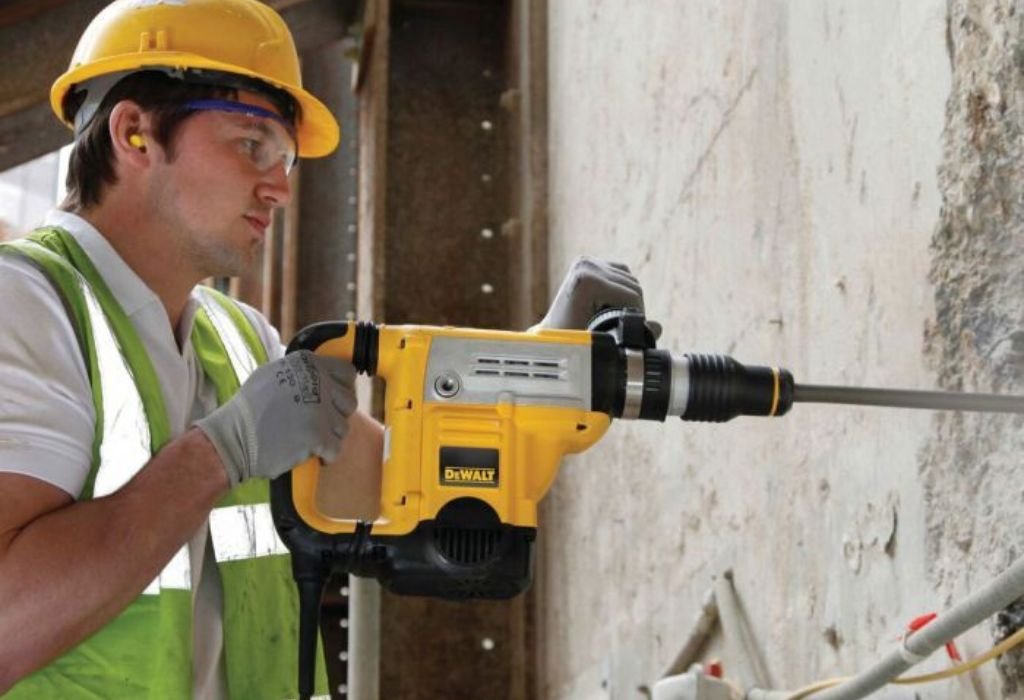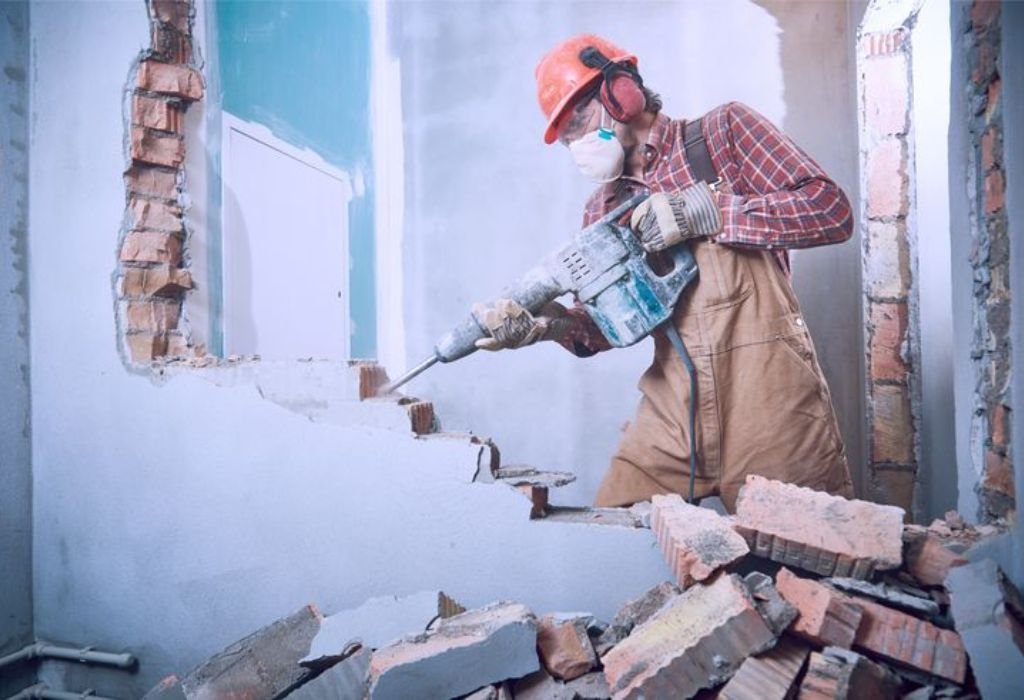Imagine being in the middle of a drilling project when the SDS Plus bit suddenly gets stuck. Minutes turn into frustration as the rotary hammer refuses to release the bit, delaying your work and risking damage to the tool.
SDS Plus rotary hammers are designed for fast and tool-free bit changes, yet many DIYers and professionals struggle with them. A common mistake is forcing the bit or skipping lubrication, which increases wear and makes the chuck seize up more often.
The popularity of SDS Plus systems comes from their efficiency. In fact, SDS Plus rotary hammers account for over 70% of the global rotary hammer drill market, making them the most widely used system for masonry and concrete work (Statista).
Improper handling, however, leads to downtime and accidents. Studies show that more than 30,000 drill-related injuries are treated annually in the United States, many linked to tool misuse or lack of safety practices (CPSC).
Learning how to change SDS Plus rotary hammer bits correctly ensures smooth operation, longer tool life, and fewer accidents. Whether you are working on home improvement tasks or professional construction projects, mastering the SDS Plus system is essential for efficiency.
This guide provides step-by-step instructions on how to change SDS Plus rotary hammer bits safely. From understanding the chuck system and troubleshooting stuck bits to applying proper maintenance, every detail is covered to help you work smarter and safer.
What Is an SDS Plus Rotary Hammer?
An SDS Plus rotary hammer is a power tool designed for drilling into tough materials like masonry, concrete, and stone. It uses a slotted drive system (SDS) that allows bits to lock securely while still moving with the hammering action.
The SDS Plus system is different from traditional keyed chucks. It allows tool-free bit changes, faster performance, and better energy transfer during heavy-duty drilling.
What does SDS stand for?
SDS stands for Slotted Drive System.
What makes SDS Plus different from standard chucks?
It uses grooves and locking balls instead of jaws, enabling quick changes.
Can SDS Plus accept SDS Max bits?
No, SDS Plus and SDS Max are different sizes and are not compatible.
What projects use SDS Plus rotary hammers most?
They are used for masonry drilling, anchor installation, and concrete demolition.
Understanding the SDS Plus Bit System

The SDS Plus bit has a specially designed shank with slots and grooves. These grooves fit into the chuck, where locking balls hold the bit securely while still allowing back-and-forth movement.
This system provides better impact force transfer compared to standard drill chucks. It also eliminates the need for tightening with a key or extra tool.
How many grooves does SDS Plus have?
SDS Plus bits typically have four grooves.
Why do SDS Plus bits lock securely?
The grooves align with locking balls inside the chuck, preventing slipping.
Can standard drill bits be used in SDS Plus?
No, only SDS bits fit the chuck correctly.
What’s the main benefit of SDS Plus over keyed chucks?
It allows faster bit changes and stronger impact transfer.
Step-by-Step: How to Change SDS Plus Rotary Hammer Bits
Preparing the Tool
Before changing the bit, disconnect the tool from power. For corded tools, unplug it, and for cordless models, remove the battery.
Always wear gloves and safety glasses to prevent injury from sharp edges or debris.
Releasing the Old Bit
Hold the tool securely and pull back the chuck sleeve. While holding the sleeve, remove the old bit from the shank.
If the bit is stuck, rotate it slightly while pulling. This helps the locking balls disengage.
Inserting the New Bit
Slide the new SDS Plus bit into the chuck while keeping the sleeve pulled back. Push it until it clicks into place.
Release the sleeve to lock the bit automatically.
Testing the Fit
Gently pull on the bit to confirm it is locked. Run the tool briefly to check for smooth rotation.
How do you know if the bit is fully locked?
If the bit clicks and does not pull out, it is secure.
Can you change SDS Plus bits without tools?
Yes, the SDS system is designed for tool-free changes.
What if the bit feels loose?
Remove and reinsert it until it locks firmly.
Do you need lubrication on the shank?
Yes, applying SDS chuck grease helps prevent sticking.
Troubleshooting Common Issues
Bit Stuck in the Chuck
Dust and lack of grease often cause stuck bits. Applying oil or tapping gently while pulling usually releases the bit.
In severe cases, clean the chuck with compressed air and apply fresh grease.
Chuck Won’t Release
If the chuck sleeve refuses to move, debris may be blocking it. Cleaning and lubricating usually restores function.
Incorrect Bit Type
Using SDS Max or standard drill bits in an SDS Plus chuck will not work. Always confirm bit type before insertion.
Why does my SDS bit get stuck?
Dust, debris, or lack of lubrication are common reasons.
What tool frees a jammed bit?
A soft mallet or light tapping often works.
Can forcing the chuck damage it?
Yes, excessive force can break internal components.
How often should the chuck be cleaned?
After every few uses, especially in dusty environments.
Safety Tips When Changing SDS Plus Bits
Always power off the tool before changing bits. Live tools increase the risk of serious accidents.
Gloves protect your hands from sharp bit edges and residual heat. Never attempt to change bits immediately after drilling hard concrete.
Can changing bits while powered risk injury?
Yes, it can cause serious accidents.
Why wear gloves during bit changes?
They protect against cuts and burns.
Is it safe to change bits immediately after drilling?
No, bits are often too hot to handle safely.
What’s the safest way to handle hot drill bits?
Allow them to cool before removal.
Maintenance Tips to Extend Rotary Hammer Life
Keep the chuck clean by blowing out dust and debris with compressed air. Dirt buildup reduces locking efficiency and causes stuck bits.
Apply SDS chuck grease regularly to prevent wear. Grease also ensures smooth insertion and removal of bits.
Store bits in protective cases to keep them sharp and free from rust. Replace worn chuck sleeves when they no longer hold bits securely.
How often should the chuck be greased?
Every 2–3 uses or as recommended by the manufacturer.
What type of grease is best?
Use SDS-specific or high-quality lithium-based grease.
Can dirty bits damage the chuck?
Yes, they wear down the locking mechanism.
Do worn chucks affect drilling performance?
Yes, they cause slippage and reduced impact power.
Comparing SDS Plus with Other Systems

SDS Plus and SDS Max are the two most common rotary hammer systems. SDS Plus is smaller and designed for medium-duty work, while SDS Max is used for heavy demolition.
Compared to standard keyed or quick-change drills, SDS Plus provides superior power transfer and faster bit changes.
Can SDS Max bits fit in SDS Plus?
No, the sizes are different and incompatible.
Which is better for heavy-duty demolition?
SDS Max is designed for extreme jobs.
Why is SDS Plus more common than SDS Max?
It is versatile and fits most medium-duty applications.
Are SDS bits universal across brands?
Most SDS Plus bits are interchangeable across major brands.
Conclusion
Changing an SDS Plus rotary hammer bit is quick and simple once the process is understood. Proper technique ensures safety, prevents tool damage, and keeps projects running smoothly.
Learning how to change SDS Plus rotary hammer bits quickly also extends tool life. By following safety practices, using lubrication, and maintaining the chuck, your rotary hammer will stay reliable for years.
Always confirm bit type, lock it securely, and inspect the chuck regularly. With these steps, SDS Plus rotary hammers will remain one of the fastest and most efficient tools for masonry and concrete drilling.

I’m John F. Nicholas, the founder, lead writer, and drill enthusiast behind 101drill.com. With years of hands-on experience in power tools and DIY projects, I created this platform to share practical knowledge, expert tips, and real-world insights to help others master the art of drilling.
